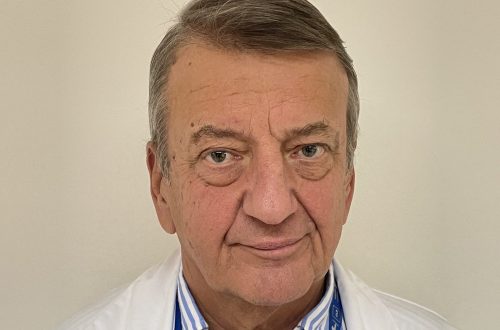Congress Newsletter 2023
The European Diploma in Anaesthesiology and Intensive Care: a 40-year-old story revisited
As I write these lines before our Symposium and Congress, the very sad news of Prof. Paolo Pelosi passing in eternity is shaking our Society. A leader and a mentor, our Past President was an exceptional scientist (one of the highest H-index around!), a dedicated intensivist, but in his immediately palpable brilliance, an approachable, spontaneous and modest doctor. Rest In Peace, dear (Past) President!
Our Symposium was dedicated to the 2024 imminent Anniversary of 40 years from our first European Diploma Exam.
Originally held in Strasbourg in 1984 (first Part 1) and then followed in 1985 by first Part 2, our exam grew from strength to strength. We now pay tribute to the leaders to contributed decisively to its development, John Zorab and Sir Peter Simpson, and we offer today 2 prestigious prizes dedicated to them to the candidates with the highest marks in each part of the examination on each year.
Over these 40 years, we grew to new and new records:
- We registered a record number of over 3300 candidates for EDAIC Part I in 2022. Albania, Cyprus, Estonia and Jordan are joining in 2023, while Paraguay will join in 2024, and Indonesia is adopting the EDAIC Part I as a mandatory exam in 2024. Many countries adopted Part I as part of their National Exam and, as a result, benefited from a preferential rate.
- More than 1400 candidates are accommodated for Part II 2023 in an online, hybrid or physical setting of the oral exam. Malta renewed their adoption agreement with improved cooperation in 2023 – it was the first country to adopt both Part I and Part II as National Exam.
- On-Line-Assessment OLA and the newly designed HOLA (Home On-Line Assessment) were used this year by more than 2100 anaesthesiologists, either as a proper exam (Argentina, Moldova) or as a very valuable pre-exam formative assessment.
- The preparation course added the 3rd component, the Viva Course (sold out on its first year) and registers an increased interest in the last years, now with more than 300 attendees.
- Expansion outside Europe is extraordinary. Egypt, India, Brazil, Argentina and Indonesia are very valuable collaborators.
- The development of all our exams, using our own IT expertise and the valuable support of our IT provider, continues, thanks also to our Committee, Examiners, Invigilators, Hosts and, not the least, to our exceptional Staff.
The abstracts of our Symposium could be summarised as follows:
Can diplomates of the EDAIC set the qualification standard for anaesthesiology practice in Europe?
Dr Nicolas Brogly, Chair Part-1 Subcommittee
Since its creation in the 1980s, the European Diploma in Anaesthesiology and Intensive Care was referred to as an evolution, or maybe a revolution, in the assessment of anaesthesiologists, not only in Europe but also outside the borders of our continent.
The ETR in anaesthesiology and intensive care recommended in its last edition in 2022 that various summative assessments should be performed during training and that EDAIC Part I could be completed after 3 years of training; towards the end of the training, the Part-II Examination of EDAIC may be completed.
The great expansion of EDAIC in Europe in the last years is the fruit of the constant efforts of previous Diplomates of the EDAIC, able to promote and implant this fantastic assessment tool in the training programs of European countries. To follow tracing this line, started by our predecessors almost 40 years ago, we strongly encourage our diplomates to get involved in the EDAIC organisation, to bring the exam near the trainees and to convince our national authorities that the EDAIC is the way to set the qualification standards in Europe.
Can clinical competence be assessed through an oral viva exam? Prof. Dr Markus Klimek, Chair Part II Subcommittee
The answer is a clear yes, as far as it goes for knowledge, decision-making skills, communication abilities, ethical and professional considerations.
However, herein the exam relies on the skills of the examiner and the questions asked.
Furthermore, aspects of team interaction and practical skills are hard to assess – workplace-based assessment would be necessary to cover them.
Including this in the Part II exam would mean a huge logistical challenge with high costs, too (for example: OSCE for FRCA).
It is unclear whether the added value would justify this investment.
EDAIC: where do we go from here?
Dr Joana Berger-Estilita, Deputy Part II Subcommittee
As technology advances, high-stakes examinations like the EDAIC are becoming more sophisticated, secure, and tailored to the needs of professionals, universities, national bodies and industries they serve. These developments aim to provide more accurate assessments, enhance exam experiences, and ensure that certifications and licenses reflect the current standards of practice. We anticipate several changes in the near future, which include:
a) Computer-Based Testing (CBT): Many high-stakes exams are transitioning from traditional paper-and-pencil formats to computer-based testing, which may be the case for EDAIC. CBT offers several advantages, including increased security, faster scoring and results delivery, enhanced item types (such as simulations and interactive scenarios), and the ability to incorporate multimedia elements.
b) Enhanced Security Measures and Remote Proctoring: With the increasing prevalence of online testing, security measures are being strengthened to prevent cheating and protect exam content. Proctoring technology uses webcam and microphone monitoring, screen sharing, and AI-based analysis to detect potential cheating behaviours. Remote proctoring offers flexibility and convenience while maintaining exam integrity. Techniques such as biometric identification, advanced item banking systems, and data analytics are employed to safeguard the integrity of high-stakes exams further.
c) Computerised Adaptive Testing (CAT): CAT adjusts the difficulty level of questions based on the candidate’s responses, providing a more accurate assessment of their knowledge and skills. Adaptive testing can result in shorter exam durations and more precise proficiency measurements.
d) Competency-Based Assessments: These assessments evaluate candidates’ ability to apply knowledge in real-world scenarios, demonstrating their competence in a particular profession or field.
As you can ascertain, there are many complex issues related to the fluent running of the exams, the preservation of its high standards and the future developments in line with modern requirements.
Examination Committee and Staff will be continuously striving to achieve the best possible standards for our examinations, in line with the prestige of ESAIC and increasing national requirements.
Dr Bazil Ateleanu
Examinations Committee Chair
Click here to learn more about professional examination at ESAIC.










